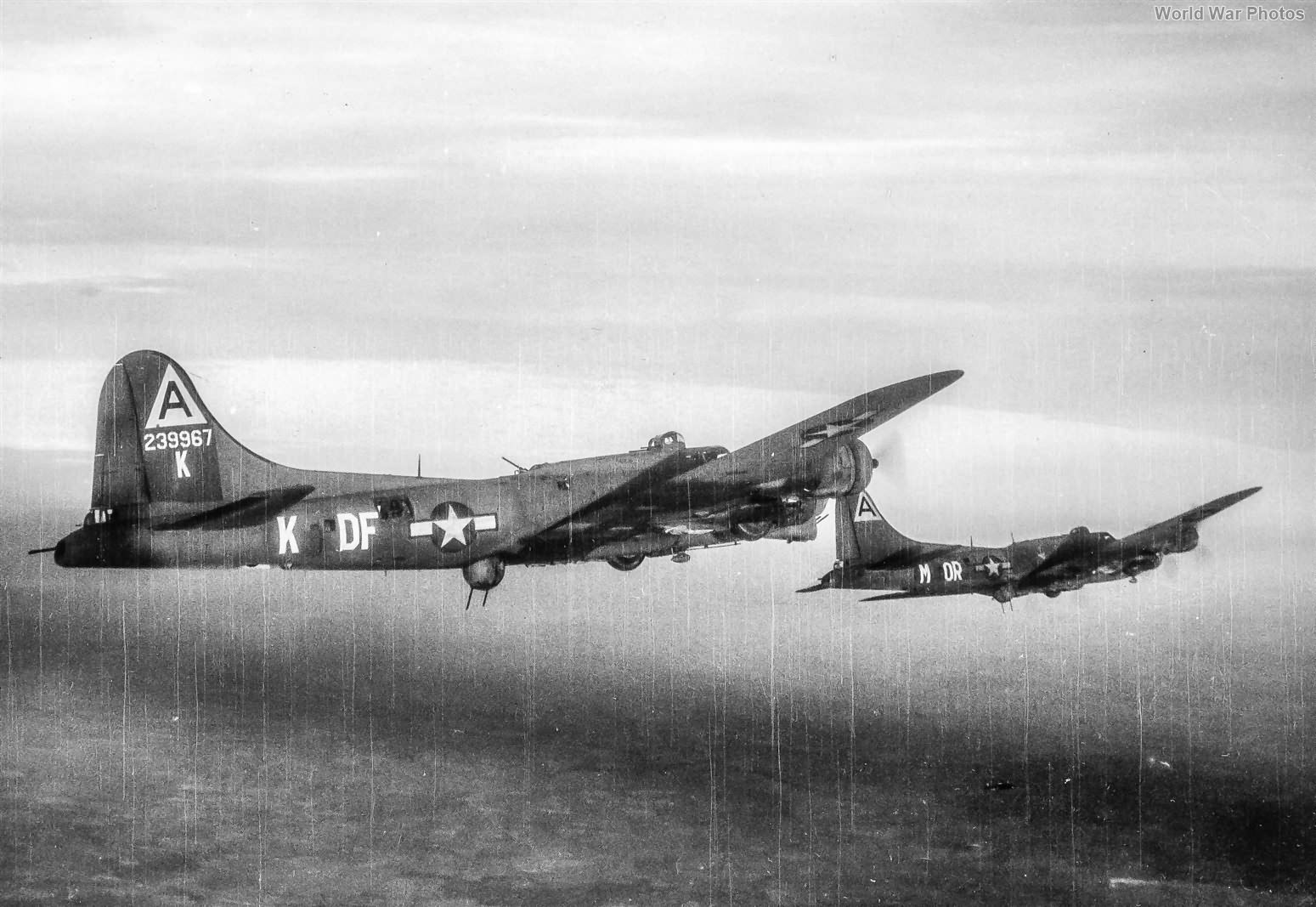The 91st Bomb Group (H), known as “The Ragged Irregulars,” played a significant role in the Eighth Air Force during World War II.
Assignments
- Eighth Air Force: Joined in September 1942.
- Wing & Command Assignments:
- VIII Bomber Command (BC), 1st Bombardment Wing (BW): Sep 1942.
- VIII BC, 1 BW, 101 Provisional Combat Bomb Wing (PCBW): Feb 1943.
- VIII BC, 1 Bomber Division (BD), 1 Combat Bomb Wing (CBW): 13 Sep 1943.
- 1 BD, 1 CBW: 8 Jan 1944.
- 1 Air Division (AD), 1 CBW: 1 Jan 1945.
Component Squadrons
- 322nd, 323rd, 324th, and 401st Bombardment Squadron (H).
Combat Aircraft
- The group operated B-17F (from blocks 10-BO) and B-17G models throughout their service.
Stations
- Kimbolton: 12 Sep 1942 – 13 Oct 1942 (Air echelon arrived 10 Oct 1942 to 17 Oct 1942).
- Bassingbourn: 14 Oct 1942 – 23 Jun 1945.
Group Commanders
- Col Stanley T. Wray: 15 May 1942 – 1 May 1943.
- Lt Col William M. Reid: 1 May 1943 – 23 May 1943.
- Lt Col Baskin R. Lawrence: 23 May 1943 – 25 Jun 1943.
- Lt Col Clemens L. Wurzbach: 25 Jun 1943 – 12 Dec 1943.
- Col Claude E. Putnam: 12 Dec 1943 – 16 May 1944.
- Col Henry W. Terry: 17 May 1944 – 30 May 1945.
- Lt Col Donald E. Sheeler: 30 May 1945 – Jun 1945 (also acting commander 15 Nov 1944 – 30 Dec 1944).
Combat Operations
- First Mission: 7 Nov 1942.
- Last Mission: 25 Apr 1945.
- Total Missions: 340.
- Total Credit Sorties: 9,591.
- Total Bomb Tonnage: 22,142.3 tons.
- Aircraft Missing in Action (MIA): 197.
- Enemy Aircraft Claims: 420-127-238.
Major Awards
- Distinguished Unit Citations:
- 11 Jan 1944: Oschersleben (1st Division).
- 4 Mar 1943: Hamm.
Claims to Fame
- Highest total claims of enemy aircraft destroyed among all 8th Air Force bomb groups: 420.
- Highest loss among all 8th Air Force bomb groups: 197 MIA.
- First group to attack a target in the Ruhr: 4 Mar 1943; Hamm.
- Led the famous Schweinfurt mission: 17 Aug 1943.
- First 8th Air Force bomb group to complete 100 missions: 5 Jan 1944.
- Tested the first flak suits in March 1943.
- B-17G “Nine-O-Nine” completed 140 missions without a mechanical turn-back, setting an 8th Air Force record.
Early History
- Activated on 15 Apr 1942 at Harding Field, Louisiana.
- Began expansion and first-phase training at McDill Field, Florida from 16 May 1942 to 22/25 Jun 1942.
- Conducted second and third-phase training at Walla Walla Army Air Base, Washington under the 2nd Air Force from 26 Jun 1942 to 24 Aug 1942.
- The ground echelon moved to Fort Dix, NJ, and boarded the Queen Mary on 2/5 Sep 1942, arriving at Gourock on 11 Sep 1942.
- The air echelon departed Walla Walla on 24 Aug 1942 for Gowen Field, Idaho, where they received their first B-17s.
- The air echelon moved to Dow Field, Maine, and by early Oct 1942, they had enough new B-17s to complete the group’s complement. The first squadron flew the North Atlantic route in late Sep 1942.
Subsequent History
- Redeployed to the USA in May/Jun 1945.
- The first aircraft left the UK on 27 May 1945.
- The ground echelon sailed on the Queen Elizabeth on 24 Jun 1945, disembarking at Camp Kilmer, NJ, on 29 Jun 1945.
- On 2 Jul 1945, the group was established at Drew Field, Florida.
- Although scheduled for Pacific service, the group was never fully manned and was inactivated on 7 Nov 1945.
Aircraft Markings
- B-17F/G Fortresses (Sep 1942 – Jun 1945):
- Original B-17Fs were in Dark Olive Drab and Neutral Gray with some Medium Green blotching along the flying surfaces.
- In Oct 1942, 24-inch yellow radio call-letters were painted on the fins below the tail numbers.
- Squadron codes painted on the fuselage forward of the cocarde on both sides from December 1942:
- 322nd Bomb Squadron – LG.
- 323rd – OR.
- 324th – DF.
- 401st – LL.
- The Triangle A Group marking (standard 72-inch size with an Insignia Blue A) was applied to the fins and right wing upper surfaces from late June/early July 1943.
- For natural metal-finish B-17Gs arriving in March 1944, the squadron and call-letters were painted in black, and the Group marking was white on black.
- July 1944: Red scheme applied to wing tips and tail surfaces for 1st Combat Bomb Wing aircraft. Tail numbers and call-letters were repainted on the red panel, in black on bare metal-finished aircraft and in yellow on camouflaged aircraft.
